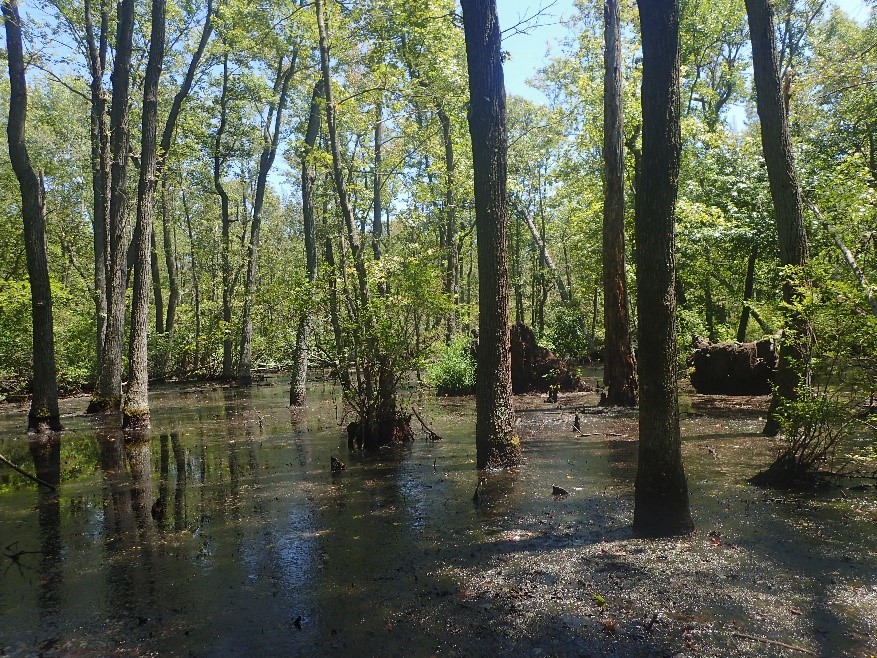The Chester-Choptank watershed is located partially in Kent County and partially in New Castle County, where it encompasses 113,944 acres of land. Unlike most of Delaware’s watersheds, the Chester-Choptank drains to the Chesapeake Bay. The Chesapeake Bay drainage basin in Delaware, including the Chester-Choptank watershed, provides an estimated $3.4 billion in ecosystem goods and services.
Wetlands within the Delaware portion of the watershed are all non-tidal, freshwater wetlands. This watershed is a combination of multiple watersheds, including Sassafras River, Elk River, Chester River, and Upper Choptank River. The landscape is dominated by agriculture, followed by wetlands then development. Approximately 35% of the land area of the Chester-Choptank watershed is covered by wetlands.
By 2007, more than 25,000 acres of the watershed’s historic wetlands, or 39% of historic wetland acreage, had been lost, mostly due to land conversion such as residential development. Impacts to wetland health reduce a wetland’s ability to perform fully, minimizing its valuable role in providing ecosystem services for both people and wildlife.
Overall, the Chester-Choptank watershed’s wetlands received a B for their health score. Common wetland stressors were residential development, agriculture, selective cut harvesting, and the presence of invasive species.
The Chester-Choptank watershed needs your help. Despite positive steps forward, wetland loss and degradation have continued in the Chesapeake Bay basin, such as in the Chester-Choptank watershed. Based on this study, several recommendations were made to improve management and encourage informed decision making. These included:
For more information about the Condition Report, contact Alison Rogerson, at 302-739-9939.

Related Topics: assessment, chesapeake, chester, chester-choptank, choptank, watershed, watershed stewardship, wetland, wetlands